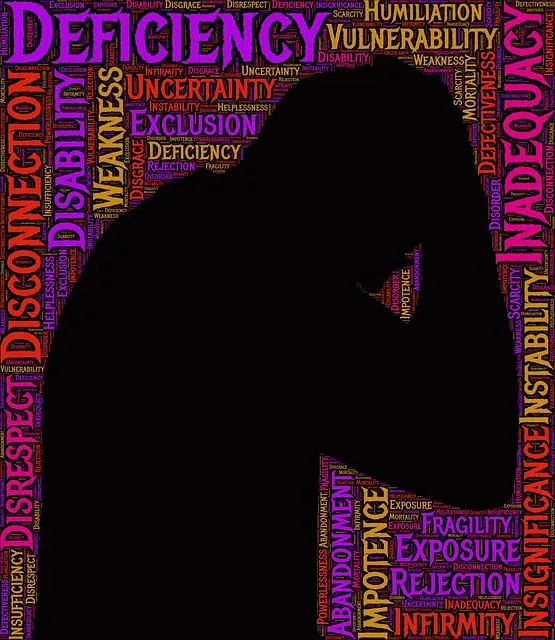Greenwood Village Kaiser Permanente prioritizes patient safety and healthcare provider well-being through robust risk management strategies tailored to its behavioral health providers. By identifying and mitigating risks like burnout, heavy caseloads, and moral distress, the organization fosters a culturally competent environment conducive to inclusive, effective care. Behavioral health professionals lead proactive risk management planning, leveraging comprehensive assessment protocols, advanced tools in mental health education, and self-care practices like journaling and exercise guidance. These initiatives enhance patient engagement, minimize harm, and solidify Greenwood Village Kaiser Permanente's reputation as an innovator in compassionate behavioral healthcare.
Mental health professionals face unique challenges, demanding robust risk management planning. This article explores a strategic approach to mitigating risks within mental health care settings, using Greenwood Village Kaiser Permanente as a case study. We delve into identifying potential hazards specific to behavioral health providers at this facility and present comprehensive protocols for assessment and safety. Additionally, we discuss the importance of continuous monitoring and improvement processes to ensure optimal patient care for Greenwood Village Kaiser Permanente’s behavioral health providers.
- Understanding Risk Management in Mental Health Care
- Identifying Potential Risks at Greenwood Village Kaiser Permanente
- Creating Comprehensive Risk Assessment Protocols
- Implementing Effective Safety Strategies for Behavioral Health Providers
- Continuous Monitoring and Improvement for Enhanced Patient Care
Understanding Risk Management in Mental Health Care

In the realm of mental health care, risk management is a vital strategy to ensure patient safety and the well-being of healthcare providers, especially in organizations like Greenwood Village Kaiser Permanente, where behavioral health professionals play a crucial role. This involves identifying, assessing, and mitigating potential risks that may arise during therapy sessions or daily operations. By implementing effective risk management plans, mental health professionals can create a secure environment for both patients and themselves.
The process includes understanding the unique challenges faced by healthcare providers, such as burnout prevention strategies for healthcare providers, especially given the demanding nature of their work. Moreover, cultivating coping skills development through training and education enables professionals to navigate complex situations. Additionally, enhancing cultural competency among behavioral health providers ensures a more inclusive and effective care approach, addressing diverse patient needs within Greenwood Village Kaiser Permanente’s tapestry of services.
Identifying Potential Risks at Greenwood Village Kaiser Permanente

At Greenwood Village Kaiser Permanente, identifying potential risks is a multifaceted process tailored to meet the unique challenges faced by behavioral health providers. The environment within the healthcare facility itself can pose risks, from heavy caseloads and limited resources to the constant demand for emergency services. These factors can lead to burnout and moral distress among mental health professionals.
Effective risk management starts with acknowledging these pressures and fostering an open dialogue through communication strategies. Implementing stress reduction methods, such as mindfulness exercises and regular supervision sessions, can help mitigate the impact of these risks. Additionally, providing crisis intervention guidance ensures that staff are equipped to handle not only their own emotional well-being but also that of their patients during periods of heightened stress or traumatic events.
Creating Comprehensive Risk Assessment Protocols

Greenwood Village Kaiser Permanente’s behavioral health providers are at the forefront of recognizing that effective risk management planning is pivotal to ensuring patient safety and well-being. To this end, they’ve pioneered the development of comprehensive risk assessment protocols that encompass a multi-faceted approach. This involves integrating sophisticated tools and techniques, tailored to individual patient needs, into their mental health education programs design. Such protocols meticulously evaluate various factors, including past traumas, current stressors, and coping mechanisms, to predict and mitigate potential risks.
By fostering Mental Health Awareness, these protocols empower providers to guide patients through Emotional Healing Processes. They do so by identifying early warning signs of escalating issues, enabling prompt interventions. This proactive strategy not only minimizes harm but also enhances patient engagement in their own care plans. Such holistic risk management practices are transforming the landscape of behavioral health services, ensuring that Greenwood Village Kaiser Permanente remains a leader in innovative and compassionate mental healthcare.
Implementing Effective Safety Strategies for Behavioral Health Providers

Implementing effective safety strategies is paramount for Greenwood Village Kaiser Permanente behavioral health providers to ensure the well-being of both patients and practitioners. Beyond adhering to institutional protocols, professionals can actively cultivate a resilient practice by integrating mental wellness journaling and exercise guidance into their routines. These activities serve as powerful tools to manage stress, enhance emotional intelligence, and prevent burnout—common challenges faced within the healthcare sector.
By prioritizing self-care, behavioral health providers can sustain their focus, empathy, and resilience in treating patients. Incorporating practices like regular journaling allows professionals to process complex emotions and reflect on personal boundaries, fostering a healthier work-life balance. Similarly, structured exercise guidance promotes physical and mental rejuvenation, enabling healthcare providers to approach patient interactions with renewed energy and clarity.
Continuous Monitoring and Improvement for Enhanced Patient Care

Mental health professionals at Greenwood Village Kaiser Permanente strive for continuous monitoring and improvement to enhance patient care. Regular evaluations and feedback mechanisms are implemented to ensure that services meet the evolving needs of individuals seeking support, especially in areas like behavioral health. By adopting this approach, the organization encourages a culture of learning and adaptation among its dedicated healthcare provider team.
Moreover, integrating Self-Care Practices and Mindfulness Meditation into their routine has proven beneficial for both providers and patients. This holistic strategy not only improves clinical outcomes but also fosters a more compassionate and culturally competent environment, as demonstrated through the comprehensive Cultural Competency Training programs offered to all behavioral health providers at Greenwood Village Kaiser Permanente.
Risk management planning is an indispensable component of providing quality care at Greenwood Village Kaiser Permanente, especially for behavioral health providers. By understanding potential risks, such as patient elopement or self-harm, and implementing comprehensive assessment protocols, these professionals can ensure a safer environment. Continuous monitoring and improvement processes further enhance patient outcomes, fostering a culture of safety among Greenwood Village Kaiser Permanente’s behavioral health providers.


